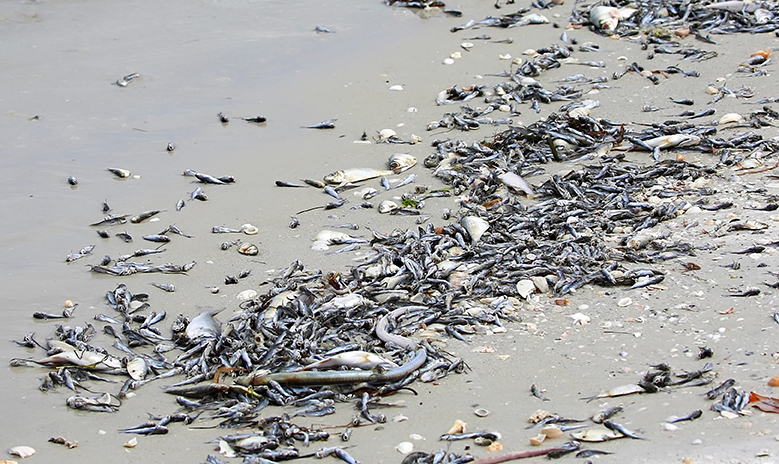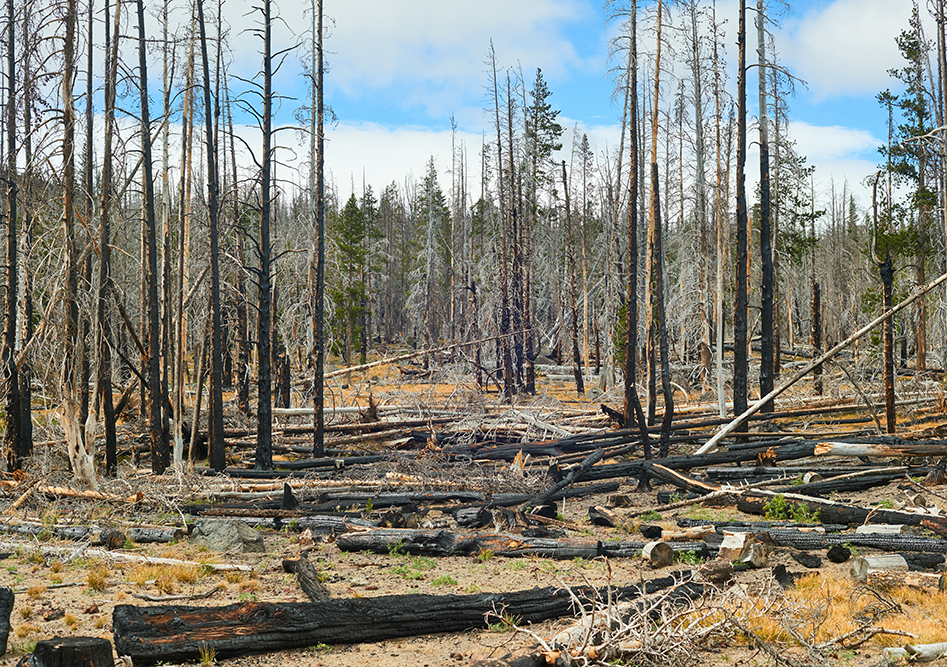Understanding Nature-Related Risks
There is a growing appreciation that our collective response to the unfolding climate and environmental crisis has been myopic. Partially, this is because our conversation has been generally limited to impacts to business operations, real estate (the built environment), and the overall economy. But what about the natural environment?
 The 2021 Report of the Independent Review on the Economics of Biodiversity led by Professor Sir Partha Dasgupta, commissioned by the United Kingdom (UK) Treasury, calls nature “an essential entity in our economic lives” and a “blind spot” for economics.1 Our society and economy are built on an ecological foundation, and that foundation is in danger. The report highlights that between 1992 and 2014, while produced capital per person doubled, and human capital per person increased by about 13 percent globally; the stock of natural capital per person reduced by nearly 40 percent. This means that our economic prosperity has come at the cost of nature.
The 2021 Report of the Independent Review on the Economics of Biodiversity led by Professor Sir Partha Dasgupta, commissioned by the United Kingdom (UK) Treasury, calls nature “an essential entity in our economic lives” and a “blind spot” for economics.1 Our society and economy are built on an ecological foundation, and that foundation is in danger. The report highlights that between 1992 and 2014, while produced capital per person doubled, and human capital per person increased by about 13 percent globally; the stock of natural capital per person reduced by nearly 40 percent. This means that our economic prosperity has come at the cost of nature.
This model is not sustainable. There is a growing gulf between the demand humans are putting on the natural systems and nature’s ability of keep up with that demand and replenish itself. The World Economic Forum (WEF) has estimated more than half of the world’s economic output (US $44 trillion) is moderately or highly dependent on nature. Of these construction, agriculture, and food and beverages are the three largest industries that depend most on nature.2
The COVID-19 pandemic made it clear that there is a direct link between ecological destruction, biodiversity loss, and ecosystem health. This impacts global economic activity. Now, you might say that the COVID-19 crisis gave nature a break. We all heard reports about the dolphins returning to the canals in Venice, and historically low air pollution levels in major cities. The Integrated Carbon Observation System (ICOS) reported a drastic drop in global CO2 levels, with a decrease of 17 percent by April 2020 in comparison to mean 2019 data.3 Unfortunately, most of these impacts were in cities, and according to data collected by the National Oceanic and Atmospheric Administration (NOAA), there has been little overall change in the global monthly mean CO2 levels in response to the pandemic, with records dating back to the 1980s showing a continuous annual increase in global CO2 concentrations, including in 2020 and 2021.4 Indeed, researchers have argued that “effects of the COVID-19 pandemic on biodiversity and ecosystem health can exacerbate drivers of zoonotic and infectious disease emergence, increasing the risk for future zoonotic pathogen spillover events and possible public health crises.”5
The Coalition of Finance Ministers for Climate Action notes though while climate change and nature loss are deeply interconnected and mutually reinforcing, nature loss could have severe economic and financial impacts because few human-made substitutes for ecosystem services exist, in comparison to the case of low-carbon alternatives to fossil fuels could.
But what is to be done?
 Though climate change-related risks and nature-related risks are interdependent and share characteristics, the forms these risks take can differ. For instance, nature-related risks are generally more localized; while the negative externalities associated with climate change are more global. Nature-related risk can also have immediate local impact (though not necessarily) and are often more multidimensional and difficult to assess. Finally, risks associated with climate change are better understood and addressed than nature-related risks. Over the last decade, we’ve developed an architecture of climate change-focused disclosure, and businesses are increasingly more aware of risk and opportunities. Similar tools to assess nature-related risks aren’t readily available.
Though climate change-related risks and nature-related risks are interdependent and share characteristics, the forms these risks take can differ. For instance, nature-related risks are generally more localized; while the negative externalities associated with climate change are more global. Nature-related risk can also have immediate local impact (though not necessarily) and are often more multidimensional and difficult to assess. Finally, risks associated with climate change are better understood and addressed than nature-related risks. Over the last decade, we’ve developed an architecture of climate change-focused disclosure, and businesses are increasingly more aware of risk and opportunities. Similar tools to assess nature-related risks aren’t readily available.
Thankfully, the first concrete steps to understand and quantify nature-related business risks are being taken, along with proposed operational changes to manage them. Just as the Task Force on Climate-related Financial Disclosures (TCFD) rallied the market into reporting on climate-related risks in a standardized way, the Task Force on Nature-related Financial Disclosures (TNFD) is working to put the architecture in place that “factors nature in financial and business decisions.” The disclosure, currently in its beta version, is meant to be a risk management and disclosure framework that is science-based and practical to implement.
The mission of TNFD is to ultimately support a shift in global financial flows away from nature-negative outcomes and towards nature‑positive outcomes. Apex Companies has formally joined TNFD as part of its forum, a consultive grouping of over 650 organizations, and is excited to support this mission and to help increase our net nature capital through this structured and systematic approach.
Apex has over 30 years of experience in sustainability, helping clients address and quantify climate impacts as well as expertise in natural resources consulting. We believe that only by understanding your risk exposure can you formulate nature-smart plans that embed nature-based solutions. We look forward to learning more about this new framework and to helping our clients develop solutions that integrate all aspects of climate and nature impacts from business operations.
To learn more about Apex and our related services, see our Sustainability and ESG Solutions, or contact us today!
1 https://www.gov.uk/government/publications/final-report-the-economics-of-biodiversity-the-dasgupta-review
2 https://www3.weforum.org/docs/WEF_New_Nature_Economy_Report_2020.pdf
3 Le Quéré, C., Jackson, R.B., Jones, M.W. et al. Temporary reduction in daily global CO2 emissions during the COVID-19 forced confinement. Nat. Clim. Chang. 10, 647–653 (2020). https://doi.org/10.1038/s41558-020-0797-x
4 https://gml.noaa.gov/ccgg/trends/global.html
5 https://www.thelancet.com/journals/lanplh/article/PIIS2542-5196(21)00258-8/fulltext
Apex Associated Press (Apex AP) represents contributions from various authors within the Apex professional community.
Disclaimer
Please note that all content provided on this blog is for informational purposes only and does not necessarily represent the views, opinions, strategy, or methods of Apex Companies, LLC (Apex). Apex makes no representations as to the accuracy or completeness of any information on this site or found by following any link on this site. Apex will not be liable for any errors or omissions in this information nor for the availability of this information. Apex will not be liable for any losses, injuries, or damages from the display or use of this information. Apex reserves the right to edit or delete any comments submitted to this blog without notice to whoever wrote, submitted or posted the comment. Anyone who submits or posts any material to this blog waives any right or claim to privacy with respect to the content submitted or posted. By submitting or posting any content, the person or entity that does so is representing that they believe it to be accurate, have a legal right to the content, and have legal authority to submit or post it. Please do not submit or post anything if this is not the case. Please consider these requirements carefully when submitting or posting comments, photographs or other material relating to third parties who may have privacy, ownership or other rights implicated by the content. Readers are encouraged to seek professional legal, scientific, and/or engineering consultation concerning specific environmental, engineering, or other concerns. If you would like to contact Apex for more information regarding professional consultation to address your specific concerns, click here.
